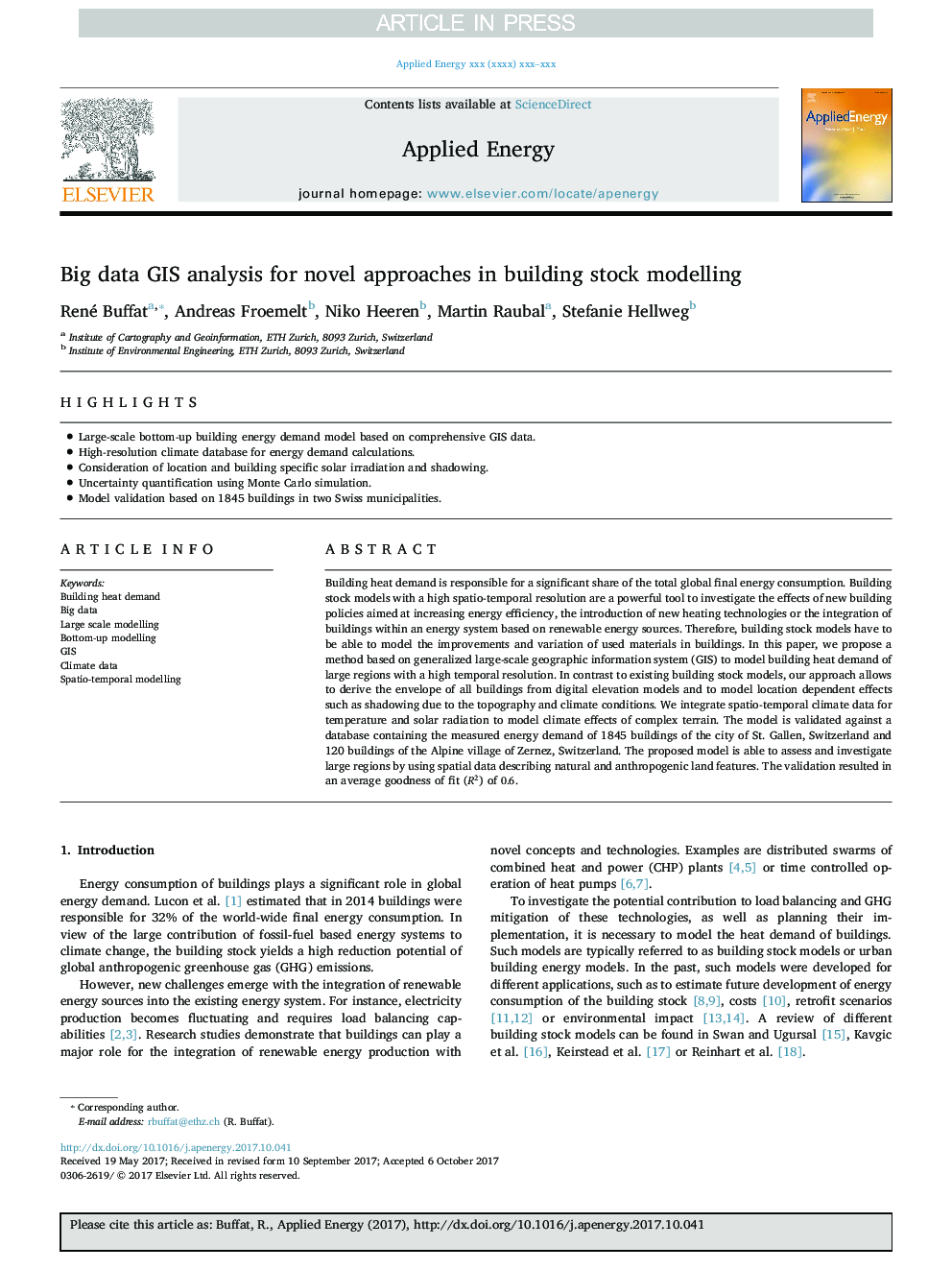| Article ID | Journal | Published Year | Pages | File Type |
|---|---|---|---|---|
| 6681661 | Applied Energy | 2017 | 14 Pages |
Abstract
Building heat demand is responsible for a significant share of the total global final energy consumption. Building stock models with a high spatio-temporal resolution are a powerful tool to investigate the effects of new building policies aimed at increasing energy efficiency, the introduction of new heating technologies or the integration of buildings within an energy system based on renewable energy sources. Therefore, building stock models have to be able to model the improvements and variation of used materials in buildings. In this paper, we propose a method based on generalized large-scale geographic information system (GIS) to model building heat demand of large regions with a high temporal resolution. In contrast to existing building stock models, our approach allows to derive the envelope of all buildings from digital elevation models and to model location dependent effects such as shadowing due to the topography and climate conditions. We integrate spatio-temporal climate data for temperature and solar radiation to model climate effects of complex terrain. The model is validated against a database containing the measured energy demand of 1845 buildings of the city of St. Gallen, Switzerland and 120 buildings of the Alpine village of Zernez, Switzerland. The proposed model is able to assess and investigate large regions by using spatial data describing natural and anthropogenic land features. The validation resulted in an average goodness of fit (R2) of 0.6.
Related Topics
Physical Sciences and Engineering
Energy
Energy Engineering and Power Technology
Authors
René Buffat, Andreas Froemelt, Niko Heeren, Martin Raubal, Stefanie Hellweg,
